





Arabian mount
Mr. Brimmer stood behind every word when he described Fatima as a "full-blooded Arabian mount" to Bret Maverick.[1] However, that one word, "Arabian," was misleading in more ways than one. Not only was Fatima a camel rather than an Arabian horse, she was not even Arabian.[2]
Fatima was a two-humped Bactrian camel, native to the steppes of Central Asia, not the Arabian Peninsula. It is the one-humped dromedary camel that is Arabian.[2]
Perhaps Mr. Brimmer was merely misinformed about Fatima's origins. Or maybe he himself was trying to run one on Bret, anxious as he was to get rid of the sad-eyed creature.[3]
Donna Seely's house
After Carl Jimson heard that his fiancée, Donna Seely, had visited Bret Maverick in his hotel room, he paid a visit to her house to find out why.[1]
Jimson is seen riding up to Donna's house in an establishing shot at the beginning of the scene. But when Donna lets him in, the store front of a printing office can be seen through her open door.[1] Perhaps Donna rented her barn out to a local printer.[3]
Carl Jimson's glass jaw
Bret Maverick, riding Fatima, was able to catch up to Carl Jimson in the desert after Jimson's horse collapsed from thirst and exhaustion. Jimson took a swing at Bret, but Bret was able to subdue him in a brief fight and a couple of punches. But just how hard did Bret hit him? After loading Jimson's unconscious body onto Fatima's back, apparently deep in the blistering desert, Bret was able to walk Fatima back into Silver Springs with Jimson still knocked unconscious.[1] Perhaps Jimson had been circling back towards Silver Springs for the last several hours and by the time Bret caught up with him, the town was just over the next hill.[3]
Bret Maverick's horse
Bret Maverick rode into Clayville astride a light-colored horse wearing a breast collar. But the very next day, he rode away from Clayville on a darker horse and a completely different outfit.[1] Perhaps Bret sold his tired horse and outfit for a new one with his Clayville poker winnings.[3]
Independence Day matinee poster
Traveling shows were popular in the West, and troupes of all kinds of performers would bring their talents to distant frontier towns. But certain acts could not have appeared so far from their circuits in the East.[4]
Just after Bret Maverick met Donna Seely in the streets of Silver Springs, New Mexico Territory, they strolled along a row of store fronts and passed a poster promoting an Independence Day matinee.[1]
Many of the acts depicted on the bill were famous in their days, but never performed in the Southwest. This conglomeration of variety players represents one of the most concentrated anachronisms in the Maverick Saga:
Mr. & Mrs. Jerry Cohan, the Irish Darlings. Jeremiah "Jerry" and Nellie Cohan were the parents of later Broadway legend, George M. Cohan. Early in their careers, Jerry and Nellie billed themselves as the Irish Darlings. On July 4, 1878, the date of the poster, Nellie gave birth to little George M. in Providence, Rhode Island, more than 2,000 miles away from Silver Springs, New Mexico Territory.[5]
Trebor, the Man of Mystic Changes. Robert Fulgora was one of the fastest "transfigurators" of the stage. He began his rise to fame in the 1880s, dancing in the limelight as a woman, and stepping offstage to reappear seconds later in full gentleman's evening attire.[6] He performed his act into the 1920s, and also was a vaudeville producer later in life.[7]
Capt. McCrosson's Zouaves. Beginning in 1831, certain French light infantry regiments in North Africa were known as Zouaves, and wore distinctive colorful and baggy uniforms.[8] When the American Civil War broke out, many Northern and Southern regiments adopted not only the name and style of uniforms, but their double-time light-infantry battle tactics.[9] Shortly after the War, Capt. McCrosson began to appear on stage in Zouave attire, juggling and twirling his bayoneted rifle, often balanced and spinning it point down on the palm of his hand. He continued his act into the mid-1890s when such acts fell out of fashion.[10]
Bessie and Bernie Hart. No records have been found of such an act during the last half of the 1800s. It may be the Warner Bros. art department was paying homage to Bernie Hart, brother of noted Broadway writer and director, Moss Hart.[3]
Ned Oliver. In 1881, traveling show promoters John H. Healy and Charles Bigelow began peddling Indian remedies to an unsuspecting public in New Haven, Connecticut. By 1883, they had developed a very successful traveling medicine show fronted by "Nevada Ned" Oliver and his Kickapoo Indian Medicine Company. Oliver employed a team of Indians, none of them Kickapoo, and toured from Connecticut to New Jersey. In his heyday, Oliver sold $4,000 of Kickapoo Indian Sagwa a week.[11] In 1900, Oliver co-wrote "The Autobiography of a Quack" with Dr. Silas Weir Mitchell, exposing many of the snake oils and other nostrums of its day.[12]
Tom McIntyre & Jim Heath — "The Hamtree." A printer's error switched the first and last names of the famous traveling duo of James McIntyre and Thomas Kuton Heath.[1] They met in 1874 and subsequently developed a successful comedic minstrel act. One of their most popular routines, "The Ham Tree," involved their two blackfaced characters discussing ham growing on 300-foot-tall trees.[13] The routine evolved over the years and in its 1905 New York revival, it provided a young W. C. Fields with his first speaking role.[10]
The DeLeon's. No records were found of an act billed as the DeLeon's, and the type below the name is unintelligable enough as to provide no further clues.[1] However, one of the most famous and original burlesque acts of the early 1900s was that of Mille DeLeon. She was billed as "the Girl in Blue" and is considered to this day as the first real queen of American burlesque. A hallmark of her provocative stage routine was to throw her garters into the audience. She was notorious for creatively using scandal to gain publicity. As she traveled across America, she would often push the limits of local indecency laws.[13]
The anachronistic promoters of the Independence Day matinee were apparently very aggressive, blanketing a very wide range to draw in their audience. Wherever the show was being performed, posters promoting it were hanging in both Clayville and Silver Springs,[1] New Mexico Territory, towns about 200 miles apart.[3]
Some things in "Relic of Fort Tejon" are wild as the wind in Oregon, such as:
The Independence Day matinee poster in Silver Springs, New Mexico Territory, July 1878.[1]
The same Independence Day matinee poster behind Bret Maverick in Clayville, New Mexico Territory, July 1878.[1]
Carl Jimson rides up to Donna Seely's house.[1]
Donna Seely opens her front door to a confrontational Carl Jimson, across the way from a printing office.[1]
Bret Maverick loads Carl Jimson's unconscious body onto Fatima's back in the desert.[1]
Bret Maverick rides into Clayville on a light-colored horse with breast collar.[1]
Bret strolls into Silver Springs, walking Fatima carrying Jimson's still-unconscious body.[1]
Fatima,[1] an Asian Bactrian camel.[2]
SOURCE REFERENCES
01. Maverick, Relic of Fort Tejon (1957), Warner Bros. Pictures, Inc.
02. Camel (May 15, 2010); Robert Irwin; Reaktion Books
03. The Conjectural Maverick, Maverick Trails
04. Entertainment in the Old West: Theater, Music, Circuses, Medicine Shows, Prizefighting and Other Popular Amusements (May 3, 2011); Jeremy Agnew; McFarland
05. George M. Cohan: The Man Who Owned Broadway (1973); John McCabe; Doubleday
06. Vaudeville's Transfigurators; Mary Miley's Roaring Twenties (retrieved March 14, 2015)
07. There Were Five Houdinis; houdinisghost.com (retrieved March 14, 2015)
08. Zouaves: The First and the Bravest (August 1991); Michael J. McAfee; Thomas
09. American Civil War Zouaves (November 26, 1996); Robin Smith; Osprey Publishing
10. Man on the Flying Trapeze: The Life and Times of W. C. Fields (1997); Simon Louvish; Faber And Faber Limited
11. An Annotated Catalogue of the Edward C. Atwater Collection of American Popular Medicine and Health Reform: Volume III, Supplement: A-Z (December 2, 2008); Christopher Hoolihan; University of Rochester Press
12. The Autobiography Of A Quack And The Case Of George Dedlow (1900); S. Weir Mitchell; The Century Company
13. When McIntyre and Heath First Met; The New York Times, November 16, 1919; (retrieved March 14, 2015)
13. Gotta Get a Gimmick: The Burlesque Career of Millie De Leon; Anne Fliotsos; Journal of American Culture; Winter 1998
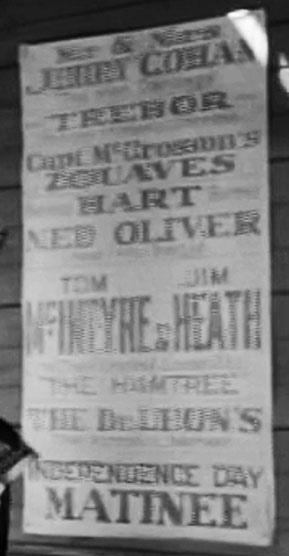
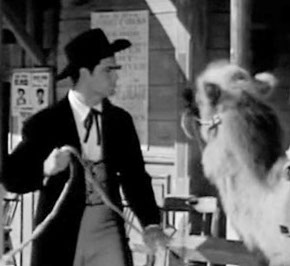
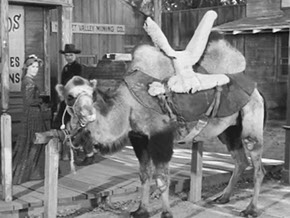
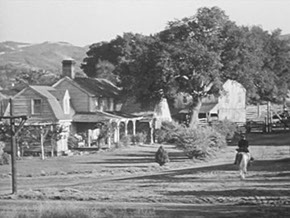
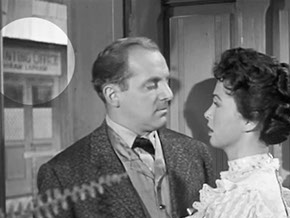
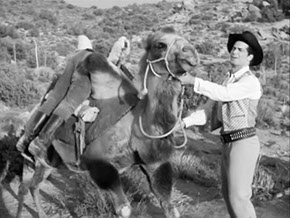
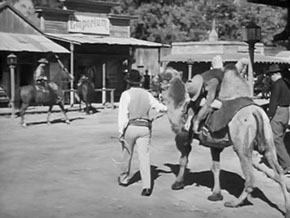
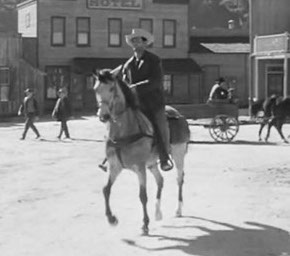
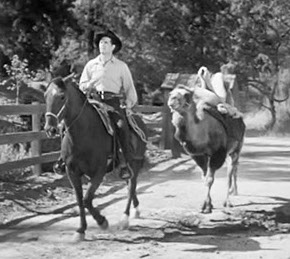
Home | The Maverick Saga | Trail Maps | Chronology | Maverick Lore | Production | The Inside Straight | Contact Maverick Trails
Maverick Trails is not endorsed, sponsored or affiliated with Warner Bros. Entertainment, Inc. or the Maverick franchise.
Maverick™ and its various marks are trademarks of Warner Bros. Entertainment, Inc., © 1957, 1994
©2014, 2015, 2016 Maverick Trails
